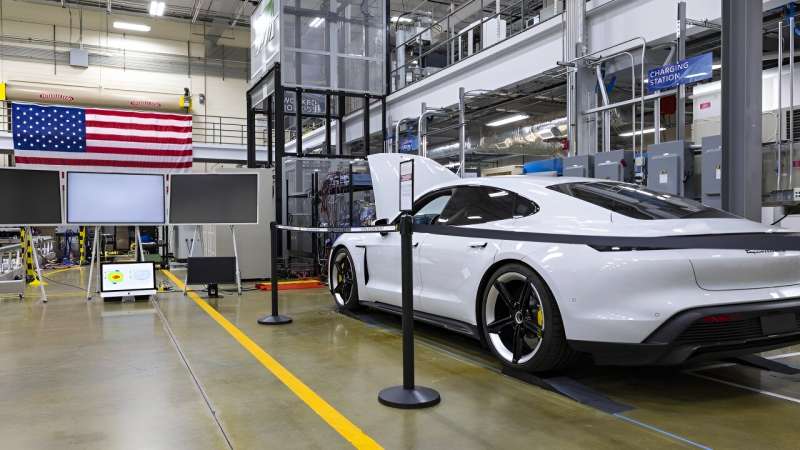
JUNE 18, 2024 by Jennifer J Burke, Oak Ridge National Laboratory
Collected at: https://techxplore.com/news/2024-06-polyphase-wireless-power-kilowatt-electric.html
Researchers at the Department of Energy’s Oak Ridge National Laboratory have successfully demonstrated the first 270-kW wireless power transfer to a light-duty electric vehicle. The demonstration used a Porsche Taycan and was conducted in collaboration with Volkswagen Group of America using the ORNL-developed polyphase wireless charging system.
The achievement surpasses ORNL’s recent 100-kW wireless charging demonstration and is another breakthrough for fast wireless charging.
“In the past three months, the ORNL vehicle power electronics and electric drives research teams have set impressive world records for wireless charging,” said Lee Slezak, DOE’s Vehicle Technologies Office technology manager for grid and charging infrastructures. “These achievements will further speed up the adoption of electric vehicles in the U.S.”
As a light-duty passenger vehicle, the Porsche Taycan would be difficult to equip using conventional large, heavy wireless power transfer systems. The vehicle can’t support the charging hardware due to space, weight and volume limitations. Existing wireless charging systems for light-duty vehicles are currently under development for up to 11-kW power levels with up to 92% efficiency. Current industry standards cover up to 20-kW power levels.
The ORNL-invented system that transferred power to the Porsche uses lightweight polyphase electromagnetic coupling coils with a diameter just over 19 inches that allow for higher power density in the smallest coil possible. This process is similar to the wireless charging of small consumer devices, but the unique geometry and design of the polyphase coils enable the transfer of extremely high power levels using rotating magnetic fields generated by the coil phase windings to boost the power. The charging system was seamlessly integrated into the undercarriage of the vehicle.
The wireless power transfer technology also includes protection systems that prevent exceeding voltage and current limits, overheating and short-circuiting. These systems can initiate shutdown procedures in the event of power interruptions or other unexpected conditions that would interfere with safe power transfer.
“The receiver coil designed for the Porsche Taycan research vehicle can achieve 8 to 10 times higher power density compared to existing systems,” said ORNL’s Omer Onar, leader of the Vehicle Power Electronics group and lead researcher on the Porsche demonstration. “Per kilowatt weight, this is also the most lightweight charging system in the world.”
Power density is important in wireless charging because it indicates how much power the system can handle relative to its size. The goal is to achieve higher densities from smaller, more compact systems to improve overall efficiency and performance. ORNL’s system can achieve a 50% increase in state of charge within 10 minutes with more than 95% efficiency. The power transfer was conducted over a 4.75-inch gap between the ground and the coil mounted to the underside of the vehicle.
The 270-kW demonstration marks the completion of a project that ORNL and Volkswagen announced in 2021. ORNL’s research team leveraged Volkswagen’s expertise in vehicle integration to test the new wireless charging concept on an electric vehicle with the goal of developing the highest-power density wireless charging system through a new design that focuses on rotating electromagnetic fields. These fields increase efficiency by reducing voltage and eliminating electric current ripples and field cancellations between the coil phase windings.

Leave a Reply